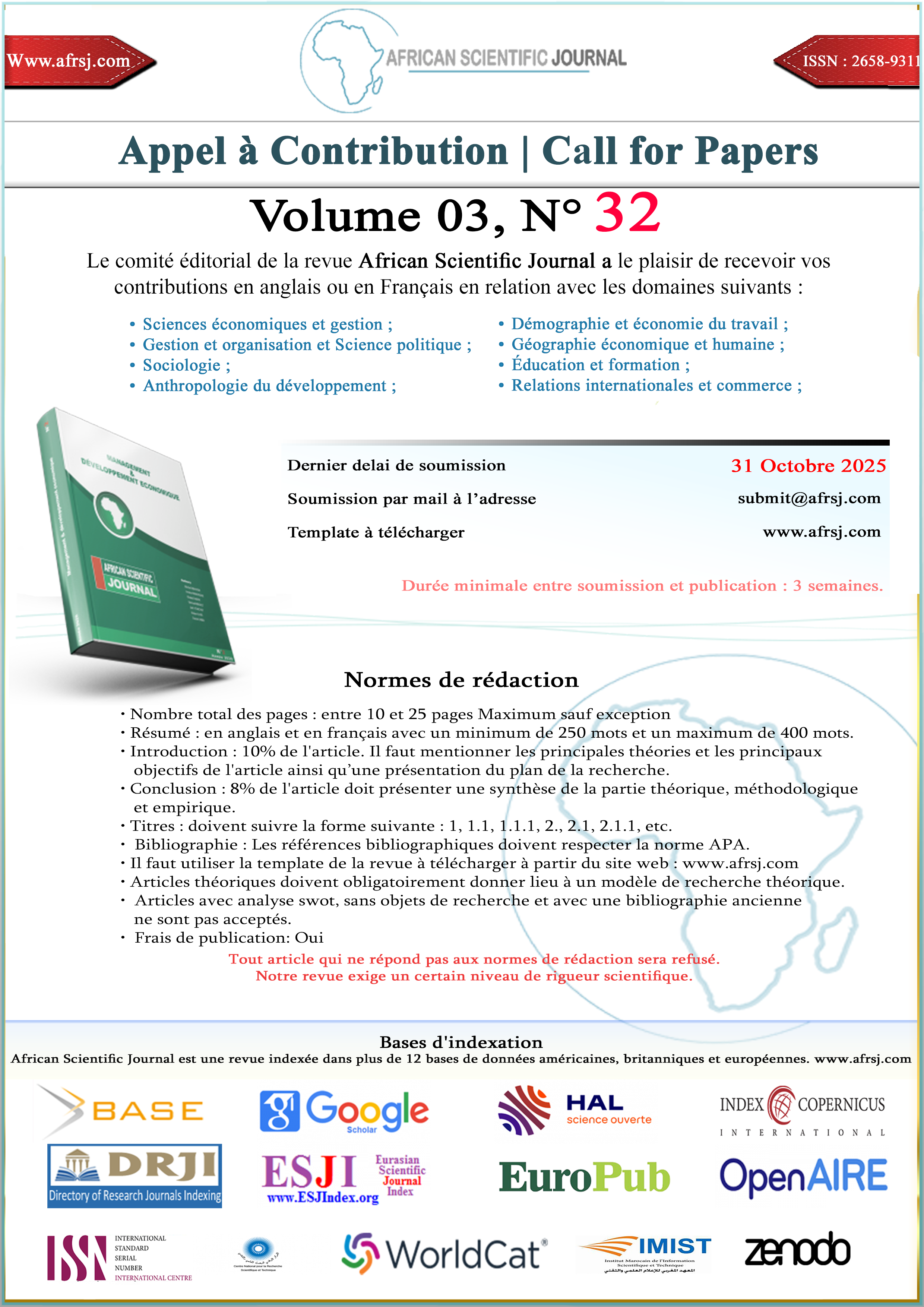Public Policies for Financial Inclusion in Latin America and Asia: What Lessons for Developing Countries?
DOI:
https://doi.org/10.5281/zenodo.7689017Keywords:
Public Policy, Financial Inclusion, Financial Exclusion, Microfinance, Poverty, GrowthAbstract
The banking crises in many developing countries have prompted discussions about necessary reforms in the financial sector. This has led to a resurgence of interventionist public policies that focus on the financial sector and are deployed through interactions with other collective or individual actors. As a result, providing banking services to a wider clientele through financial inclusion as a public good has become a topic of political debate and a public policy agenda (Sodokin Koffi, 2022). This is because excluding people from accessing financial services is not considered a public good in economic terms (Desmarais-Tremblay, 2017; Ülgen, 2020). International opinion is re-examining the need for government intervention in certain economic sectors in the face of the challenges associated with the Millennium Goals. This trend is also reflected in the words of the World Bank, which, while persisting in its support for the neoclassical model of state disengagement and the primacy of the market, is now more inclined to place greater emphasis on a redistributive model that incorporates a social dimension into public policy. This paper looks at interventionist public policies for financial inclusion in two regions, Latin America and Asia, to present the different contributions and limitations of programs and policies for developing access to finance and the use of financial supply by the excluded from formal finance and the vulnerable population in India, Mexico and Peru to focus on the role of public actors and how this translates into financial supply in the face of financial inclusion issues. The methodology used in this paper consists of a literature review of financial inclusion policies and programs in India, Mexico and Peru. The study is based on qualitative and quantitative data available in official reports, academic publications and research conducted by governmental and non-governmental organizations.
Downloads
Published
How to Cite
Issue
Section
License
Copyright (c) 2023 African Scientific Journal

This work is licensed under a Creative Commons Attribution-NonCommercial-NoDerivatives 4.0 International License.





















